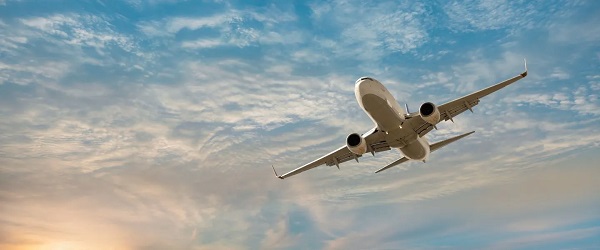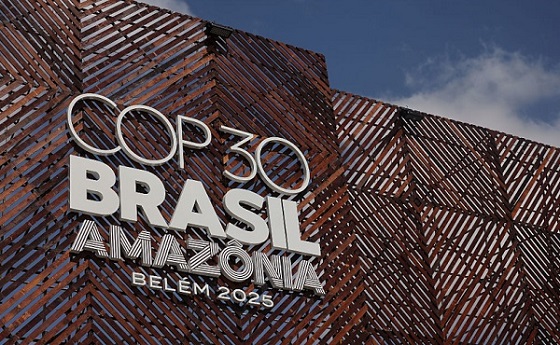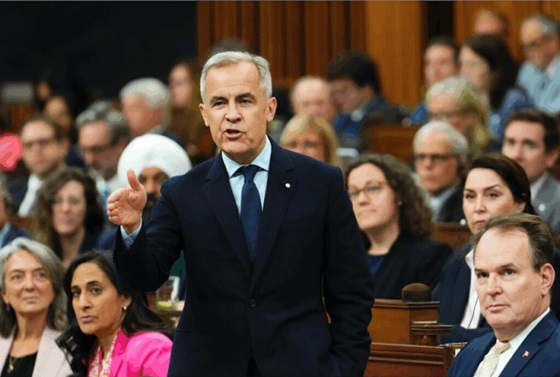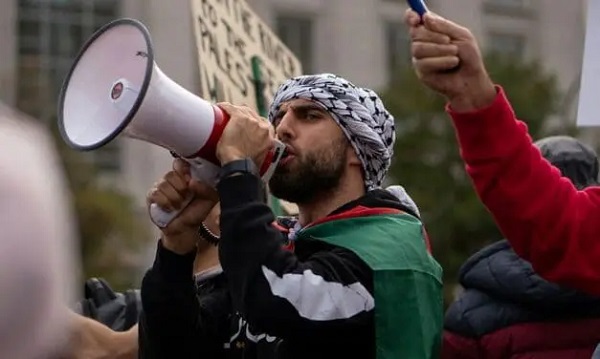Travel
Todayville Travel: A ‘soft egg’ in the Nahanni Pt. 1

This is the first in a three-part Yukon road trip series.
In German weichei means soft egg. It defines a person’s character. In Canada we call them wimps. Charly Kudlacek is from Frankfurt, Germany and, as eggs go, is hard-boiled. We met Charly and his wife Marion in a remote campground at Summit Lake on the British Columbia portion of the Alaska Highway. The place is so-named because of its location on
the highest point of this international byway.
The “Alcan” starts in Dawson Creek, BC and ends 2237 kilometers later in Delta Junction, Alaska. Remarkably the highway was built in just eight months during 1942, designed to stave off a possible World War II Japanese invasion. Although June was nigh, Summit Lake was still covered in ice. We arrived late evening and set up camp. A solitary beaver, freshly emerged from winter lodging, coolly went about its business. Canadian summers are brief. We Albertans tend to enjoy them near home, with perhaps a visit to the mountains or a couple of weeks sunning and boating on a warm lake
in the Okanagan. I’d never been north of Grande Prairie, so we decided it was time to see more of Canada in its season of warmth; the great white north converted green by boreal springtime.

My trip planning is poor: peruse a map, devise a vague strategy, perhaps talk to a couple of friends who have been to the parts unknown. I’ve attempted advance planning – reading about the sights, the flora, the fauna – but somehow it just doesn’t sink in for me until the experience actually happens. I learn as I go, waiting to see what’s around the next corner.
Charly was apologetic. “In former times I was not so slow and the distance would be much greater.”
A stranger at a campground in Fort Nelson told us about a bush pilot who flew floatplane charters from Muncho Lake, B.C. to remote Virginia Falls in Nahanni National Park, in the Northwest Territories. I had no idea where Muncho Lake was. I checked the map and found it was two days up the road, directly on our path to the Yukon. I phoned and spoke to Marianne of Northern Rockies Lodge. She and her husband, Urs the bush pilot, own this beautiful spot on Muncho Lake. “Urs is in Vancouver getting the
floatplane ready for the season,” said Marianne in a thick Swiss accent. “The lake still has ice and he can’t land until it clears. Perhaps call again in a day or two.”
That was the night we camped at Summit Lake and met Charly and Marion. I asked them if they’d like to join us on a trip to Virginia Falls – if the ice cleared and Urs could fly in. I waxed eloquently, inflating my meager knowledge of the Nahanni (which I had gleaned from a guide book fifteen minutes earlier). The floatplane seats nine and Marianne had told me Urs wouldn’t fly with less than four paying customers. Germans have a propensity for austerity exceeded only by Scots, so I was not optimistic that our Alaska Highway adventure would include a spur-of-the-moment side trip to the Northwest Territories.
“We shall sleep on this,” announced Charly. In the morning crispness Charly informed me in a precise clip that, “Marion and I have slept on this and agree that we shall join you if the conditions permit.” We spent the next two days in the company of our newfound German friends, enjoying wonderful hiking in this remote corner of northeastern BC, enchanted by the sight of moose, grizzly bear, stone sheep, caribou, wood bison, and a countless variety of flying creatures.
Charly and Marion have made five trips to Canada. They have seen more of our home and native land than have I – an embarrassing admission. They never arrive unprepared. Their well-appointed rental camper van was fully equipped, except for an axe. Charly brought his own finely-edged Fiskar from Germany. After a particularly tiring day-hike up a melting mountain creek, Charly asked if I would like to join him for a short run down the highway. Naturally, I was stupid enough to acquiesce. 10 kilometers and an hour later I stumbled back to camp, lamely following his tireless legs.
Charly was apologetic. “In former times I was not so slow and the distance would be much greater.” When I collapsed into bed that night Charly was alternating between calisthenics and wood chopping. In the morning I stumbled out into the bright sun and found him washing in the cold creek. He’d been up for hours, eaten his morning repast of eggs, meat, cheese,
tea, fruit and five pieces of bread and had completed 50 pushups and 100 sit-ups. Then he buckled down to real breakfast: a hearty bowl of Muesli.

Did I mention that Charly is older than I? He is no weichei. They say the Irish (my heritage) would rule the world were it not for Guinness. After
observing Charly for a few days I have concluded that there is somewhat more to the equation. When we arrived at Muncho the lake was still half frozen and, crucially, ice still surrounded the lodge where the plane was to land. But Marianne told us Urs was en route from Vancouver and would be arriving soon. Sure enough, as we set up camp, a canary-yellow de Havilland floatplane droned overhead.

In the morning Urs told us that the landing had been dicey. He had spent a good portion of the night breaking a slushy path to get the plane ashore. “Night” doesn’t mean dark here in late May. The sun sets after 11 pm and is up again by 4 am. The interval is simply dusky. “What about tomorrow?” I asked Urs. “Can we fly to the Nahanni?” Urs is a big man, clad always in blue jeans and red suspenders. His name means “bear” in Swiss German. He looked at me, then warily at the lake. A wind had come up. We could
see a wide river of rotten ice moving northward. Open water was within 300 meters of the Lodge. “Perhaps… if the wind continues and does not reverse direction.” I crossed my fingers. Our window of opportunity was closing. Charly and Marion had only one day to spare before continuing on to Whitehorse, Yukon. Our schedule was more relaxed, but without them we couldn’t do the charter.

In the morning the ice had moved. It was a bluebird day. But still Urs was worried. He would decide at noon. I’m not renowned for my patience; but I am a biblical Job next to Charly who paced the morning away, unable to control the situation, awaiting word from Urs. “Impatience. This is a minus point for me,” Charly admitted.

In the past I’ve mentioned a phenomenon known as “the Feehan thing”. This entails arriving at the last possible moment, uninformed, ill-prepared, sans reservation, but expecting top-notch service. Invariably it works like a charm. At noon Urs announced the flight was a go.

He gently lifted the retrofitted 1959 de Havilland off the emerald waters of Muncho Lake and banked over the Lodge. Our hour and a half flight crossed the BC border at 60 degrees north, swiping a corner of the Yukon Territory before entering the NWT. Urs treated us to a spectacular 360-degree view of Virginia Falls before landing upstream of the cascade. He touched the plane down softly, wary of deadheads floating down the swollen Nahanni River. We were Nahanni’s first visitors of the year, arriving even before Parks Canada set up camp for the season.
The Falls, a world-renowned UNESCO site, are twice the height of Niagara Falls. An icy spring pillar hung precariously down the center of the water’s 102-meter descent. Downstream the torrent curved through ochre cliffs en route to its confluence with the Mackenzie River and the Arctic Ocean three thousand kilometers away. Our stay in the Nahanni was brief – after just a few hours aground we were skimming back up off the river. Urs offered us a last spectacular glance at the Falls. Then the old plane banked southward, skirting vast unexplored ridges of the Northwest Territories. In the early evening light, the northern-most tip of the Rocky Mountains appeared, signaling our return to British Columbia.

It was well past 8 pm when the de Havilland touched down perfectly on the calm waters of Muncho Lake. The sun was still high in the sky. We hopped from the plane’s floats to the dock and bid goodbye to our German friends. Before heading down the road Charly offered a heart-felt hug – confirming that, inside, all good eggs are soft.

Next time: Dawson City and the Dempster Highway
Gerry Feehan QC practised law in Red Deer for 27 years before starting his second life as a freelance travel writer and photographer. He says that, while being a lawyer is more remunerative than travel writing, it isn’t nearly as much fun. When not on the road, Gerry and his wife Florence live in Red Deer and Kimberley, BC. Todayville is proud to work with Gerry to re-publish some of his most compelling stories from his vast catalogue developed over more than a decade of travel.

Business
Carney government should privatize airports—then open airline industry to competition

From the Fraser Institute
By Alex Whalen and Jake Fuss
This holiday season, many Canadians will fly to spend time to with family and friends. But air travellers in Canada consistently report frustration with service, cost and choice. In its recent budget, the Carney government announced it will consider “options for the privatization of airports.” What does this mean for Canadians?
Up until the 1990s, the federal government served as both the owner and operator of Canada’s major airports. The Chrétien government partially privatized and transferred the operation of major airports to not-for-profit airport authorities, while the federal government remained the owner of the land. Since then, the federal government has effectively been the landlord for Canada’s airports, collecting rent each year from the not-for-profit operating authorities.
What would full privatization of airports look like?
If the government allows private for-profit businesses to own Canada’s major airports, their incentives would be to operate as efficiently as possible, serve customers and generate profits. Currently, there’s little incentive to compete as the operating authorities are largely unaccountable because they only report to government officials in a limited form, rather than reporting directly to shareholders as they would under privatization. Private for-profit airports exist in many other countries, and research has shown they are often less costly for passengers and more innovative.
Yet, privatization of airports should be only the first step in a broader package of reforms to improve air travel in Canada. The federal government should also open up competition by creating the conditions for new airports, new airlines and new investment. Currently, Canada restricts foreign ownership of Canadian airlines, while also restricting foreign airlines from flying within Canada. Consequently, Canadians are left with little choice when booking air travel. Opening up the industry by reversing these policies would force incumbent airlines to compete with a greater number of airlines, generating greater choice and likely lower costs for consumers.
Moreover, the federal government should reduce the taxes and fees on air travel that contribute to the cost of airline tickets. Indeed, according to our recent research, among peer countries, Canada has among the most expensive air travel taxes and fees. These costs get passed on to consumers, so it’s no surprise that Canada consistently ranks as a very expensive country for air travel.
If the Carney government actually privatizes Canada’s airports, this would be a good first step to introducing greater competition in an industry where it’s badly needed. But to truly deliver for Canadians, the government must go much further and overhaul the numerous policies, taxes and fees that limit competition and drive up costs.
International
America first at the national parks: Trump hits Canadians and other foreign visitors with $100 fee

Foreign visitors heading to America’s crown-jewel national parks will soon face a steeper bill, as the Trump administration moves to prioritize U.S. taxpayers who already bankroll the system. The Department of the Interior announced Tuesday that starting in 2026, non-residents will be charged an additional $100 at 11 of the country’s busiest parks — a list that includes the Grand Canyon, Yellowstone, Yosemite, Acadia, Everglades, and other iconic destinations. The change accompanies a sharp increase in the cost of an annual all-parks pass for foreign tourists, which will jump to $250, more than triple the current rate. Americans and permanent residents will continue paying $80.
Interior Secretary Doug Burgum framed the policy as a straightforward matter of fairness. “President Trump’s leadership always puts American families first,” he said, arguing that U.S. households already subsidize the National Park System and deserve affordable access while international tourists contribute “their fair share” to the upkeep and expansion of the park network. It’s a pitch that aligns with Trump’s broader push to restore what he calls a sense of ownership and pride in the country’s natural treasures, and to make sure the burden of maintaining them doesn’t fall solely on American families.
We’re making it easier & more affordable for Americans to experience the beauty & freedom of our public lands!
In 2026, we’re launching:
– America-first pricing 💵
– Digital passes 📱
– Patriotic pass designs 🇺🇸
– Expanded motorcycle access 🏍️
– 5 additional fee-free days 🗓️ pic.twitter.com/a2SvHNBdSP— Secretary Doug Burgum (@SecretaryBurgum) November 25, 2025
The National Park Service recorded nearly 332 million visits in 2024 across its 63 designated national parks — a staggering figure that has placed heavy pressure on trails, facilities, and staff. While some parks charge per-vehicle fees and others by the individual, the $80 “America the Beautiful” pass covers the holder and all passengers or up to four adults. Under the new rules, foreign visitors who purchase the $250 annual pass will avoid the extra $100 at the 11 high-traffic parks, but all other overseas travelers will pay the surcharge at the gate.
The administration says the approach follows a July executive order from President Trump, aimed at preserving parkland “for American families” by ensuring those who don’t support the system through taxes help shoulder the cost of its growing maintenance needs. Burgum’s department also highlighted that U.S. visitors will continue to enjoy “patriotic fee-free days” tied to national observances — including President’s Day, Veterans Day, and Flag Day, which coincides with Trump’s birthday — while foreign visitors will pay full freight.
The move is expected to generate significant revenue from international tourism while reinforcing a message that has become central to Trump’s agenda: America’s natural wonders belong first to the taxpayers who fund them, and protecting access for those families comes before subsidizing the travel of visitors from abroad.
-

 Digital ID2 days ago
Digital ID2 days agoCanada releases new digital ID app for personal documents despite privacy concerns
-

 Energy2 days ago
Energy2 days agoCanada’s sudden rediscovery of energy ambition has been greeted with a familiar charge: hypocrisy
-

 Daily Caller22 hours ago
Daily Caller22 hours agoParis Climate Deal Now Decade-Old Disaster
-

 Business12 hours ago
Business12 hours agoOttawa Pretends To Pivot But Keeps Spending Like Trudeau
-

 armed forces1 day ago
armed forces1 day agoOttawa’s Newly Released Defence Plan Crosses a Dangerous Line
-

 Energy11 hours ago
Energy11 hours agoLiberals Twisted Themselves Into Pretzels Over Their Own Pipeline MOU
-

 Censorship Industrial Complex9 hours ago
Censorship Industrial Complex9 hours agoHow Wikipedia Got Captured: Leftist Editors & Foreign Influence On Internet’s Biggest Source of Info
-

 Bruce Dowbiggin2 days ago
Bruce Dowbiggin2 days agoNFL Ice Bowls Turn Down The Thermostat on Climate Change Hysteria











